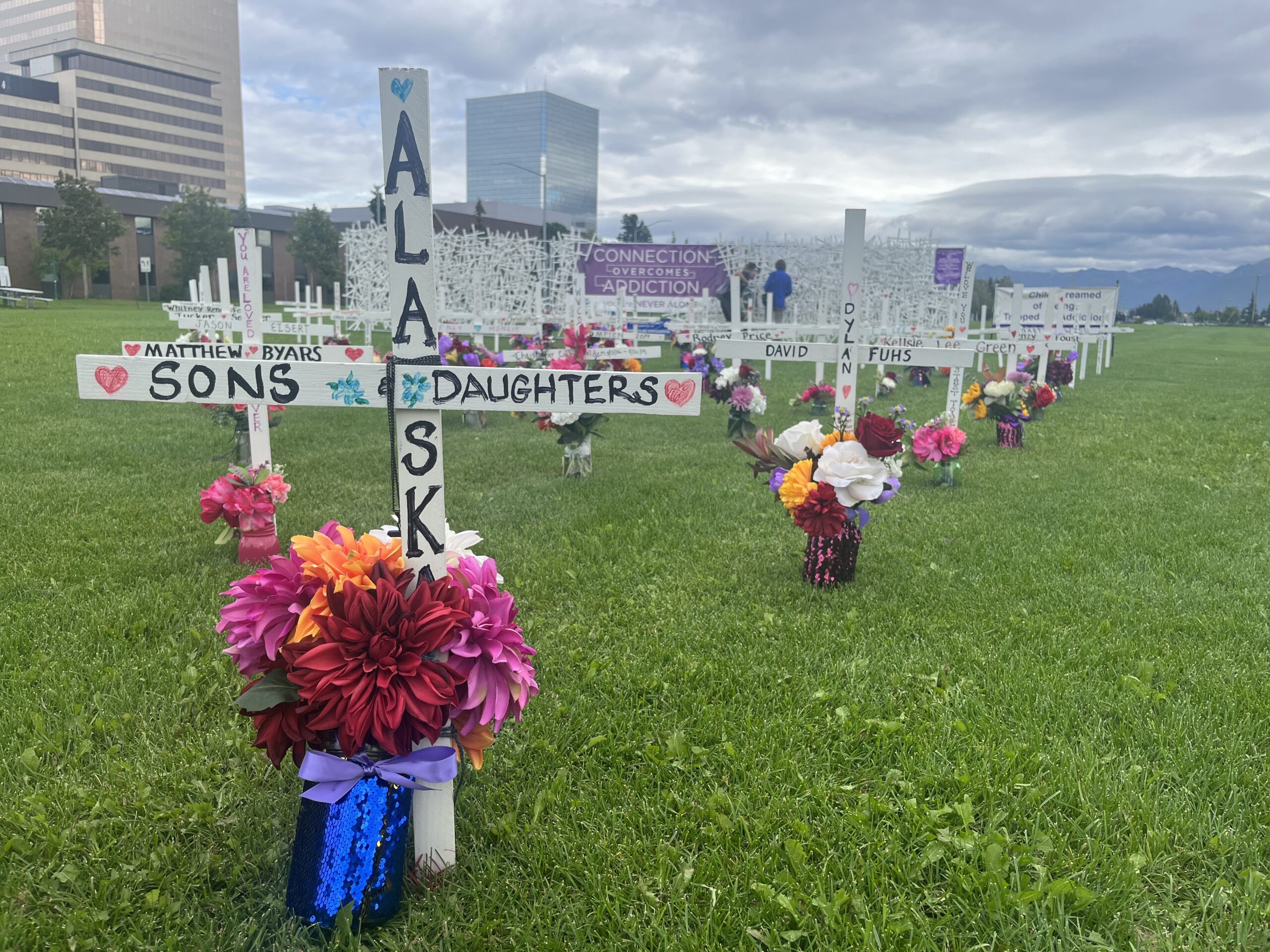
More Alaskans died from an opioid overdose last year than ever before, according to preliminary data, and the state reported the nation’s highest per capita increase in opioid overdose deaths.
The numbers are heartbreaking, said Lindsey Kato, the director of Alaska’s Division of Public Health. She said overdose deaths can have a ripple effect of grief, especially in smaller communities.
“I’ve lost many friends to the opioid epidemic, family members, etc.,” Kato said. “Personally these numbers are absolutely heartbreaking. Professionally, these numbers are heartbreaking. But I also know that we’re up against a lot.”
There were 342 fatal opioid overdoses reported in Alaska in 2023, according to the division. That’s about a 45% rise from the year before. The increase comes as Alaska scrambles to respond to an epidemic that continues to shift form.
The first wave of the opioid epidemic stemmed from overprescription of painkillers, and in the second wave, people already addicted shifted to heroin when prescription pill supply was reduced. This current, third wave is driven by synthetic opioids like fentanyl. It’s up to a hundred times more potent than morphine and supply is seemingly unlimited compared to drugs like heroin or cocaine which rely on crops and are limited by growing seasons. In a state without enough access to substance abuse treatment, Alaskans remain vulnerable to both addiction and overdose.
But organizations throughout Alaska are working to reduce the number of people dying from overdose, through education, connection to services and distribution of Naloxone and Kloxxado, which can reverse an overdose temporarily.
Kato said the state gave out more than 46,000 overdose reversal kits last year and without those, she said, the number of people dying would have been higher.
“I don’t want those that have been working so hard in this space to feel like they have not accomplished something,” Kato said. “I think the one thing I found out in this field is that we hardly [ever] get to know the number of lives that we save.”
Kato said opioid reversal drugs are essential for reducing deaths; most overdoses happen with someone else present.
Dr. Sarah Spencer, an addiction medicine specialist in Ninilchik, said she’s noticed most of her patients now combine methamphetamine with fentanyl, which can be more risky. She said it’s a common misconception that stimulants like methamphetamine can keep someone from overdosing on opioids.
“Fentanyl in particular is like a very incredibly potent, super fast acting respiratory depressant,” Spencer said. “A stimulant [is] not able to make a difference in that. It’s just not strong enough to actually help to keep the person awake.”
Spencer said people sometimes take fentanyl in a powder form but most often in counterfeit blue pills. Seven in 10 counterfeit pills in the country now have a potentially-lethal dose of fentanyl and she said people can overdose when smoking fentanyl too.
Spencer said many populations within Alaska don’t have enough access to addiction treatment including people who are incarcerated. She said the state doesn’t do a good job of getting medications for treating opioid addiction to them and it would be one of the biggest ways to reduce overdose rates in the state.
“They are 120 times more likely to die [in the] first two weeks that they’re released,” Spencer said. “It would reduce our state’s entire overdose rate if we had universal availability of medication for opioid use disorder throughout a person’s incarceration, and that warm handoff to treatment afterwards.”
In 2022, 11% of overdoses in the state were people recently released from incarceration and those numbers haven’t been released yet for last year.
Kato said that’s something on the Division of Public Health’s radar and they hope to strengthen relationships with the state’s Department of Corrections. She also said the state needs to think beyond just reducing deaths, and look at prevention.
“How are we focused on helping people thrive, not just keeping people alive?” Kato asked. “How do we go a little bit more upstream in our prevention, and think more about how we can keep people healthy?”
The state plans to release final data on opioid overdoses in Alaska in September, including which demographics were hit hardest. Kato said she also wants to look carefully at how youth are impacted.
RELATED: Medication is an important tool for people struggling with alcohol addiction in Alaska
Rachel Cassandra covers health and wellness for Alaska Public Media. Reach her at rcassandra@alaskapublic.org. Read more about Rachel here.




